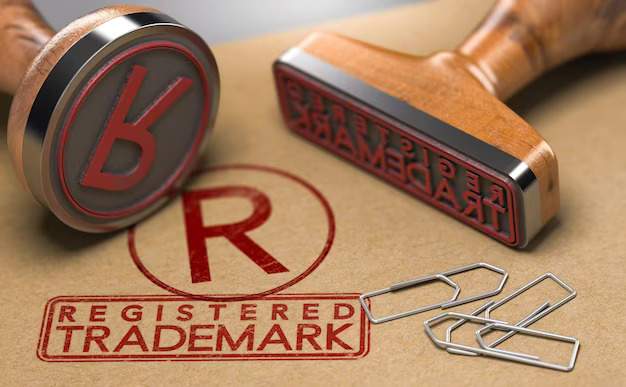Navigating Trademark Search and Registration
Our team performs thorough trademark searches to identify available trademarks suitable for registration. Our experts guide clients through the entire process, providing in-depth consultation to help them make informed decisions regarding trademark registration.
Navigating the Trademark Search Process
- Identifying Similar Marks
- Federal and State Database Search
- Examination of Pending, Cancelled, and Abandoned Marks
How Y/our Lawyer helps in Trademark Registration Process ?
Our consultant will discuss the issue over a 24X7 helpline .
Step 1
Our consultant will discuss the issue over a 24X7 helpline .
Step 1
A detailed analysis of your case will be done by an experienced lawyer.
Step 2
You will be able to track your case with a personal account
Step 3
How Y/our Lawyer helps in Trademark Registration Process ?
Our consultant will discuss the issue over a 24X7 helpline .
Step 1
Our consultant will discuss the issue over a 24X7 helpline .
Step 1
A detailed analysis of your case will be done by an experienced lawyer.
Step 2
You will be able to track your case with a personal account
Step 3
Overview
Trademark searches play a vital role in preventing future disputes and safeguarding the integrity of a trademark. This process involves searching for wordmarks within specific classes to ensure comprehensive coverage. Once a trademark is successfully registered, the owner gains exclusive rights to use the mark for distinguishing their goods or services. In this article, we delve into the step-by-step process of conducting trademark searches, highlighting the numerous benefits they offer. Additionally, we discuss different types of trademark searches to provide a comprehensive understanding of their significance.

Demystifying Trademark Search

To comprehend the concept of trademark search, it is essential to first grasp the definition of a trademark. According to Section 2(b) of the Trademarks Act 1999, a trademark refers to a visually representable mark capable of distinguishing the goods or services of one individual from those of others. It encompasses signs, expressions, and designs that serve as unique identifiers. Due to the requirement of trademark uniqueness, conducting a trademark search is crucial prior to registration. Individuals and entities, including limited liability partnerships (LLPs), can apply for trademark registration in India, which is overseen by the Comptroller General of Patent Designs and Trademark.
Selecting a distinctive and unique mark is a prerequisite before initiating a trademark search. The search aims to identify existing or registered marks that could potentially conflict with the chosen mark. Valuable insights and information about the trademark search process are accessible to individuals seeking guidance. Web browsing and trademark search databases are commonly employed tools for conducting the search. Trademarks are classified into 45 classes based on the NICE classification system, an internationally recognized classification for goods and services. Determining the appropriate class is crucial during the trademark search process to target the relevant products or services.
Procedure For Conducting Trademark Search
In India, trademark searches can be conducted using the Indian Trademark Registry database or through third-party service provider websites. These searches are crucial for assessing the authenticity and appropriateness of a proposed trademark in relation to goods and services. In addition to database searches, another research method is a comprehensive search conducted by professional agencies. These agencies explore state registers, trademark publications, business records, and domain name registrations to compile a comprehensive trademark search report.
To conduct a trademark search, individuals should visit the website associated with the trademark. The official website of the Indian Trademark Registry database is particularly useful for this purpose. Once on the site, individuals can select the search query option and enter the desired wordmark using three prefixes. After completing the trademark search, the individual can assess the authenticity of their trademark and proceed to draft an application for filing. Subsequently, the application can be filed for trademark registration.

Different Approaches to Trademark Search
When conducting a trademark search, the first step is to visit the trademark search database. Upon accessing the database, there are three distinct categories to consider:
Wordmark Search: To perform a wordmark search, select the “wordmark” option in the search query. Enter the desired wordmark into the trademark database. The trademark search is conducted based on the 45 classes of trademark registration outlined in the NICE classification. It is important to search one class at a time. Wordmark searches can be conducted using different types of prefixes. The search query can be set to “Start with” to find entries that begin with the provided value, “Contains” to find entries that include the provided value, or “Match with” to find entries that exactly match the provided value.
Phonetic Search: Similar to the wordmark search, the phonetic search does not require a specific prefix. Follow the same procedure as the wordmark search to conduct the trademark search.
Vienna Code Search: This type of search is used to find device marks with similar characteristics. Enter a six-digit Vienna code that corresponds to the desired device. Relevant classes are then selected. The search results display all the marks that contain the device.
By utilizing these categories within the trademark search database, individuals can effectively conduct searches based on wordmarks, phonetics, and Vienna codes to explore and assess the availability of trademarks.
The Significance of Conducting Trademark Searches

There has been a rise in awareness among businesses regarding intellectual property. To avoid trademark infringement or any dispute in the future relating to the trademark, businesses go for registration of the trademark. Any registered trademark or similar trademark can be found by conducting a trademark search.
- Conducting a trademark search helps by prohibiting the marks appearing in the search which have already been banned characters.
- It also helps in preventing trademarks that are similar in nature thereby helping the individual to go for alternate marks or think of new marks. Consequently, there will be no duplication of the trademark
- A trademark must be unique as well as have a proper trademark classification.
- A meticulous trademark search helps in avoiding any potential conflict.
Different Approaches to Trademark Search
To register a trademark, information needs to be provided:
- Name of the applicant
- Type of business
- Business objectives
- Brand/logo/slogan name
- Registration address
Additionally, the following documents are required:
- Signed Form-48
- Identification proof of the signatory
- Address proof of the signatory
- Business proof (varies based on the type of business)
- Optional: Udyog Aadhar/MSME registration certificate
Step-by-Step Guide to Trademark Registration"
Step 1: Conducting a Trademark Search – To ensure trademark availability, it is crucial to perform a comprehensive search using the aforementioned process.
Step 2: Selection of Classes and Document Collection – Choose the relevant classes that align with your business activities. Collect the necessary documents for the trademark registration process.
Step 3: Filing the Trademark Application – Upload all the required documents and complete the trademark application form. The application will be verified, and once approved, it will be submitted to the appropriate authorities.
Step 4: Handling Trademark Objections (if applicable) – In certain cases, objections may arise regarding the trademark registration. A 30-day period is provided to raise objections, and you should respond appropriately to address any concerns.
Step 5: Dealing with Trademark Opposition (if applicable) – Similarly, there may be instances where opposition is raised by another party. If faced with opposition, you must submit a counter-statement to the Registrar within 2 months, providing valid reasons why the opposition should be dismissed. Based on your response, the Registrar may either dismiss the opposition or call for a hearing to further evaluate the matter.
